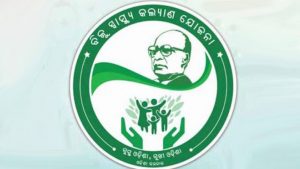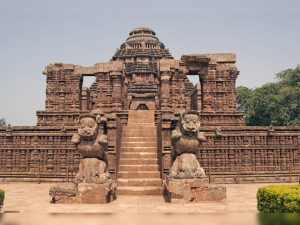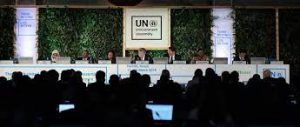Today Current Affairs: 4th March 2022 for UPSC IAS exams, State PSC exams, SSC CGL, State SSC, RRB, Railways, Banking Exam & IBPS, etc
Table of Contents
SIMBA To Give Distinct Identity To Each Asiatic Lion:

The Gujarat forest department has developed an Artificial Intelligence (AI)-based photo-identification software, specially designed to distinguish patterns/marks to identify Asiatic lions individually.
- The software is named SIMBA (Software with Intelligence Marking Based identification of Asiatic lions.)
- The SIMBA works with a deep machine learning technique that matches a point-pattern for pairwise comparisons and that automates the individual identification, based on the variability in the individual’s whisker spot pattern, the presence of scars on the face, notches on the ears and other metadata of the photograph.
- The software also extracts the uniqueness from the photograph and can cluster similar patterns.
- Listed as ‘Endangered’ under the IUCN Red List.
Thermobaric Weapons And Cluster Bomb:

Russia has resorted to the use of dangerous thermobaric bombs — or vacuum bombs — in Ukraine.
- Cluster weaponry has been banned by the 2008 Convention on Cluster Munitions; however, neither Ukraine nor Russia were signatories at the convention.
- Thermobaric weapons are called vacuum bombs as they suck in oxygen from surrounding areas to generate high-voltage explosions.
- The blast wave is of a greater intensity and duration than conventional bombs and can vapourise humans.
- While they cannot be used in taking down tanks and other such military vehicles, they can dismantle civilian spaces, like residential or commercial complexes.
Cluster bombs:
- Cluster munitions are non-precision weapons that are designed to injure or kill human beings indiscriminately over a large area, and to destroy vehicles and infrastructure such as runways, railway or power transmission lines.
- They can be dropped from an aircraft or launched in a projectile that spins in flight, scattering many bomblets as it travels.
- Many of these bomblets end up not exploding, but continue to lie on the ground, often partially or fully hidden and difficult to locate and remove, posing a threat to the civilian population for long after the fighting has ceased.
What Is The Pandemic Treaty?

Members of the World Health Organisation (WHO) held the first round of negotiations towards the pandemic treaty on February 24, 2022.
- The meeting was aimed at agreeing on ways of working and timelines for a “convention, agreement or other international instrument” to prevent further pandemics and to improve the preparedness and response in case of its occurrence.
Pandemic treaty:
- In December 2021, the Health Assembly adopted a decision titled “The World Together” at its second special session since it was founded in 1948.
- Under the decision, the health organisation established an intergovernmental negotiating body (INB) to draft and negotiate the contents of the pandemic treaty in compliance with Article 19 of the WHO Constitution.
- The pandemic treaty is expected to cover aspects like data sharing and genome sequencing of emerging viruses and equitable distribution of vaccines and drugs and related research throughout the world.
- Solutions to the COVID-19 pandemic have seen an inequitable distribution of vaccines so far, with poorer countries at the mercy of others to receive preventive medication.
- Most countries have followed the “me-first” approach which is not an effective way to deal with a global pandemic.
Biju Swasthya Kalyan Yojana:

The Odisha government recently distributed smart health cards to beneficiaries under its flagship Biju Swasthya Kalyan Yojana.
Biju Swasthya Kalyan Yojana:
- Launched on August 15, 2018.
- Aimed at providing Universal Health coverage, with special emphasis on the health protection of economically vulnerable families.
- The scheme has two components:
- One a free health services for all (irrespective of income, status or residence) in all state government healthcare facilities starting from sub center level up to District Head Quarter Hospital level.
- Two, additional facility of free healthcare beyond District Headquarters hospital level, for over 70 lakh economically vulnerable families in the state.
- After the announcement on Independence day last year, all families covered under National Food Security Act (NFSA) and SFSA also became eligible for BSKY.
- Every family enrolled under Biju Swasthya Kalyan Yojana is eligible for Rs 5 lakh from the state government, while women get cover of Rs 10 lakh under this scheme.
- All health services are free of cost, including free drugs, free diagnostics, free dialysis, free cancer chemotherapy, free OT, free ICU, in-patient admission etc., in all government health institutions up to district headquarters hospital level, for all persons.
Supreme Court’s Verdict In Bachan Singh vs State Of Punjab (1980):

More than four decades after a landmark ruling on death sentence cases, a bench in the Supreme Court has made psychological evaluation of the condemned prisoner mandatory.
- It has also sought a report on the inmate’s conduct at the time of examining whether the gallows remains the only fitting punishment.
- Taking a cue from the Bachan Singh verdict, justice Lalit, in a series of death sentences cases, has recently held that “complete assistance” to the court in such matters would necessitate the production of not just the evidence in the case but also the latest state of the mental health of the prisoner.
Supreme Court’s verdict in Bachan Singh vs State of Punjab (1980):
- This verdict established the doctrine of “rarest of rare” crime in handing down capital punishment while mandating a comparative analysis of aggravating and mitigating circumstances in connection to the accused.
- The judgment laid down that a court must scrutinise both the crime as well as the criminal, and then decide whether death penalty is the only suitable punishment in the facts of the case.
- Emphasis is to be also laid on the aggravating and mitigating factors which are dependent upon the facts and circumstances of the case.
- In 2014, the Supreme Court ruled that unexplained delay in execution was a ground for commutation of death penalty, and an inmate, his or her kin, or even a public-spirited citizen, could file a writ petition seeking such commutation.
- It held that prolonging execution of death sentence has a “dehumanising effect” on condemned prisoners who have to face the agony of waiting for years under the shadow of death during the pendency of their mercy plea. An inordinate delay would certainly have an agonising effects on their body and mind.
- In the same year, a Constitution bench also held that a review petition by a death-row convict will be heard by a three-judge bench in open court.
- Such cases were earlier being considered by two-judge benches in the judges’ chamber without any oral arguments.
India’s First Conservation Reserve For The Dugong In Gulf Of Mannar, Palk Bay:

The Tamil Nadu government has decided to go ahead with the establishment of India’s first conservation reserve for the Dugong in Gulf of Mannar, Palk Bay.
- It facilitates India to act as the leading nation in the South Asia Sub-region with respect to dugong conservation.
- Dugong (Dugong dugon) also called ‘Sea Cow’ is one of the four surviving species in the Order Sirenia and it is the only existing species of herbivorous mammal that lives exclusively in the sea including in India.
- Dugongs are an important part of the marine ecosystem and their depletion will have effects all the way up the food chain.
- They are found in over 30 countries and in India are seen in the Gulf of Mannar, Gulf of Kutch, Palk Bay, and the Andaman and Nicobar Islands.
- Conservation Status:
- IUCN Red List status: Vulnerable
- Wild (Life) Protection Act, 1972: Schedule I
- CITES: Appendix I
- Dugongs graze on seagrass and the loss of seagrass beds due to ocean floor trawling is one of the most important factors behind decreasing dugong populations in many parts of the world.
- Trawling is a method of fishing that involves pulling a fishing net through the water behind one or more boats.
- It is harmful to the environment because it damages the seafloor, coral reefs and other marine animals
- Human activities such as the destruction and modification of habitat, pollution, rampant illegal fishing activities, vessel strikes, unsustainable hunting or poaching and unplanned tourism are the main threats to dugongs.
- Dugong meat is consumed under the wrong impression that it cools down human body temperature.
Konark Sun Temple To Run On Solar Energy:

Konark is going to be the first model town in Odisha to shift from grid dependency to green energy.
- The Odisha government has issued a policy guideline in this regard.
- In May 2020, the central government launched a scheme for solarisation of Konark Sun Temple and Konark town in Odisha.
- Under the guidelines, the state has targeted to generate 2,750 megawatt (MW) from renewable energy sources like the sun, wind, biomass, small hydro and waste-to-energy (WTE), etc. by 2022-end.
- The state also targets to generate 2,200 MW from solar energy and a part of it will be utilised to run the Sun Temple and Konark town on solar energy.
- Konark’s transition to renewable energy is part of an ambitious plan by the Union Ministry of New and Renewable Energy (MNRE).
Konark Sun Temple:
- It located in the East Odisha near the sacred city of Puri.
- Built in the 13th century by King Narasimhadeva I (AD 1238-1264). Its scale, refinement and conception represent the strength and stability of the Eastern Ganga Empire as well as the value systems of the historic milieu.
- The Eastern Ganga dynasty also known as Rudhi Gangas or Prachya Gangas.
- It was the large Indian royal dynasty in the medieval era that reigned from Kalinga from as early as the 5th century to the early 15th century.
- The beginnings of what became the Eastern Ganga dynasty came about when Indravarma I defeated the Vishnukundin king.
- The temple is designed in the shape of a colossal chariot.
- It is dedicated to the sun God.
- The Konark temple is widely known not only for its architectural grandeur but also for the intricacy and profusion of sculptural work.
- It marks the highest point of achievement of Kalinga architecture depicting the grace, the joy and the rhythm of life in all its wondrous variety.
- It was declared a UNESCO world heritage site in 1984.
What Is The Wet Bulb Temperature?

Part 2 of the sixth assessment report of Intergovernmental Panel on Climate Change (IPCC), emphasised on the trend in the ‘Wet Bulb’ Temperature in South Asia.
- The trend will provide an index of the impact of heat and humidity combined — and its effect on health.
- Wet bulb temperature is the lowest temperature to which air can be cooled by the evaporation of water into the air at a constant pressure.
- WBT is a limit that considers heat and humidity beyond which humans can not tolerate high temperatures.
- The Wet Bulb temperature is the temperature of adiabatic saturation. This is the temperature indicated by a moistened thermometer bulb exposed to the air flow.
- An adiabatic process is one in which no heat is gained or lost by the system.
- Wet Bulb temperature can be measured by using a thermometer with the bulb wrapped in wet muslin.
- The adiabatic evaporation of water from the thermometer and the cooling effect is indicated by a “wet bulb temperature” lower than the “dry bulb temperature” in the air.
- The rate of evaporation from the wet bandage on the bulb, and the temperature difference between the dry bulb and wet bulb, depends on the humidity of the air.
- The evaporation is reduced when the air contains more water vapour.
- The wet bulb temperature is always lower than the dry bulb temperature but will be identical with 100% relative humidity (the air is at the saturation line).
- A wet-bulb temperature of 31°C is exceedingly harmful to humans, while a temperature of 35°C is unsurvivable for more than 6 hours.
Fifth Session Of The United Nations Environment Assembly:

The Fifth UN Environment Assembly concluded with 14 resolutions to strengthen actions for nature to achieve the Sustainable Development Goals.
- The overall theme for UNEA-5 was “Strengthening Actions for Nature to Achieve the Sustainable Development Goals”, which was hosted by the UN Environment Programme.
- The Assembly will be followed by “UNEP@50”, a two-day Special Session of the Assembly marking UNEP’s 50 anniversary where member states are expected to address how to build a resilient and inclusive post-pandemic world, as well as to endorse a draft Political Declaration.
- The world’s ministers for the environment agreed to establish an Intergovernmental Negotiating Committee (INC) with the mandate to forge an international legally binding agreement to end plastic pollution.
- INC will begin its work in 2022, with the ambition of completing a draft global legally binding agreement by the end of 2024.
- This development is considered the most important environmental deal since the 2015 Paris Agreement.
- Under the legally binding agreement, countries will be expected to develop, implement and update national action plans reflecting country-driven approaches to contribute to the objectives of the instrument.
- They will be expected to promote national action plans to work towards the prevention, reduction and elimination of plastic pollution and to support regional and international cooperation.
- Resolution on Management of Chemicals and Waste
- Resolution focused on Nature-based Solutions
- Resolution Prioritising Ecosystem Restoration
- Resolution on Minerals and Metals
- Resolution on Sustainable Lake Management
- Resolution on Sustainable and Resilient Infrastructure
- Resolution on Animal Welfare
- Resolution on Biodiversity and Health
- Resolution to Reduce Nitrogen Waste
- Resolution to strengthen measures Post Covid




